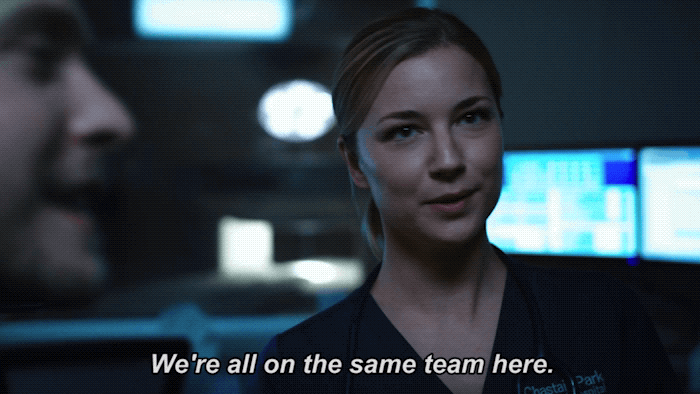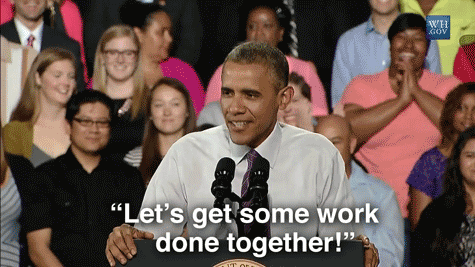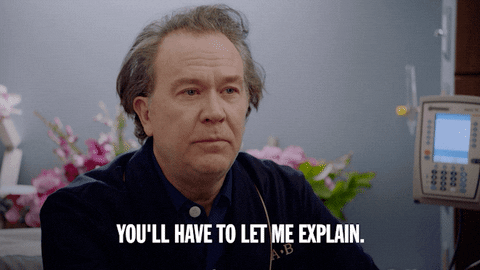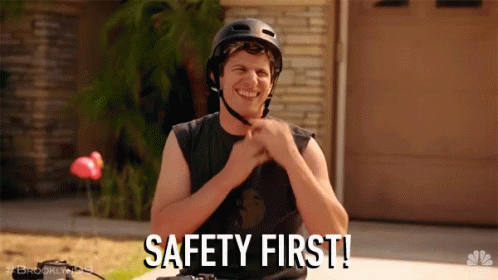We work hard to ensure that our students are comfortable exploring our campuses.
But unfortunately, we can’t guarantee that students will always be safe. That’s why it’s so important to maintain a collaborative relationship with your campus or community police department.

As a campus victim advocate, I frequently work with my institution’s police department on behalf of students who’ve faced acts of violence or crime. My office is lucky to have a great relationship in supporting students who need to access police or other justice systems.
(A note before I begin: I’d like to point out that I am writing this from my perspective as a white woman. I’m privileged in being able to see police officers as helpers, rather than as folks who would harm me. So, it’s important for me to mention that if you are from a community of people harmed by the police historically and/or presently, you do not have to engage in this way with your campus or community department — especially if you believe that it may result in harm or aggression against you or your students.
That said, I also encourage white readers to use these tips to work with their campus or community police. I encourage you to continually educate officers and hold them accountable for improving their relationships with communities of color. Engaging in this way with police is one way we can be racial justice advocates.)
Here are my tips for building and maintaining a relationship with your campus or community police department in the interest of serving all students.
6 Tips
1. Research your police
Every campus or community policing organization is unique. So, it’s important to research how yours, specifically, can support your students.
Some campuses have full police departments that patrol on campus and off. Some campuses have public safety offices with trained safety officials or security guards instead of armed officers. And some campuses have to work with community police departments in order to serve their students.
Get all of the information you can on the department online. Google your department and find out how they’ve made the news in the past, plus explore their website and read their mission statement.
You should also ask your trusted colleagues about their experiences with the department. Often, residence life, advocacy services, and CARE teams have ongoing contact with police. Ask your colleagues within these offices to name an officer with whom they’ve had success and to describe what their relationship with the police has historically been like. This, combined with your online search, can give you a good idea of what the department is like.
Whatever your institution’s case, it’s important to investigate what services your department provides to campus and community members. This will give you an understanding of how the officers can collaborate with you in serving students.
2. Meet regularly
Once you understand your campus or community police station better, you can start meeting regularly in order to build a collaborative relationship.
There are several approaches you can take for such meetings. My institution invites our police department to join campus-wide committees, including those responsible for planning violence prevention and awareness programming, like Marquette Denim Day. Previously, when we were building our violence prevention programming, officers served on our campus planning and response teams aimed to decrease sexual violence on campus.
We also invite our police dog Nattie to attend our office’s special events so that students can feel comfortable talking with the officer walking her.
The police chief also serves on a CARE team within the division of student affairs. Plus, our police department has a victim services officer with whom we can connect whenever advocacy services intersect with the criminal justice system for students.

Meeting and collaborating in these ways keeps our relationship strong, even when there are bumps in the road. When you meet regularly, you can create protocols to better serve students, you can increase communication about potential campus safety risks, and you can work together to implement safety goals.
3. Provide clear and kind feedback
Ideally, police respond in kind, caring ways to help anyone in their communities. But, mistakes may be made.
If you cultivate a positive relationship with your police department, you’ll position yourself to be a trusted giver of constructive feedback.
For example, my advocacy services coworkers and I meet with students who hold a variety of identities and a variety of needs. Sometimes, officers don’t have a deep understanding of trauma responses or their innate biases can give some wrong — even harmful — impressions to students.
So, it’s so important for someone who has a relationship with the department to provide feedback in order to improve how officers interact with students, especially students of color.
Whenever my supervisor needs to give this kind of feedback, she works with a captain who has a supervisory role in the department. He is then able to have discussions with his officers about what kind of behavior is appropriate and keep track of how often negative behavior occurs and how to end it.
If you don’t have a supervisory role, I recommend talking with your supervisor or a trusted mentor about the conduct to see if they would be able to have a conversation with the police or help you navigate a conversation.
4. Understand investigations
It’s important to understand that police investigators often must ask difficult questions.
For example, I’ve had to learn that if a police officer asks a student what they were wearing on the night of an assault, it’s probably not to victim-blame them. It may help the police identify the students on security cameras and talk to witnesses who don’t personally know the victim.
Likewise, if an investigator asks someone to identify someone in a lineup, it might not be to verify the person like in movies; it may be to show that the victim was not able to identify their perpetrator and did not know the perpetrator personally.
When you can anticipate and understand the kinds of questions that may come up in an investigation, you can better prepare students for filing police reports. And when you can explain this to students, everyone involved can build a better relationship with your police department.

5. Identify a go-to person
Police departments usually have many employees. It’s probably not possible for you to develop close relationships with all of them. So, identify your go-to collaborator or two within the office.
My office is lucky to have more than one go-to. When a victim of violence needs additional support in dealing with the criminal justice system, we work with our office’s victim support officer. He can help us come up with safety plans for students whenever the police need to be involved and is able to coordinate rides for students and advocates to the courthouse.
You can find your go-to person by meeting with as many officers as possible and testing for the best fit. Inviting officers to serve on committees is another great way to establish a relationship that can lead to having a go-to.
A good go-to officer should be responsive, open-minded, understand many campus dynamics, and have a vested interest in working within the college community.
We also connect with our victim services officer when planning programs. He will staff informational tables for us, serve on prevention program committees, and speak at student trainings throughout the year.
Our other go-to is one of the police department’s captains, with whom my supervisor discusses long-term goals, like department wide-trainings on advocacy services. She also communicates directly with the captain to provide feedback on officers’ responses to students — whether the interaction was great or in need of improvement.
Because we’ve identified and built relationships with these go-to officers, we can continue to build on our relationship with the entire police department in order to best serve students.
6. Host Training Opportunities
If you host any trainings for your staff and faculty, consider inviting your campus or community police department along. This could include leadership trainings, procedural info sessions, or employee orientations. This will give the police an understanding of your office’s role on campus while keeping your goals connected in serving students.
For example, if you work in advocacy services, you could train your police department on the services you provide students, plus explain how officers could provide a trauma-informed response to victims of violence. You could also provide a training session on how officers can recognize red flags of relationship violence and how they can connect students to support resources.
If you work in an office devoted to diversity and inclusion, you could train officers on how to better serve students and communities of color. Or if you work in LGBTQIA+ services, you could invite officers to safe space training or partner with advocacy services tp train officers on recognizing violence within LGBTQIA+ spaces.
Hosting training opportunities for officers can build trust for your collaboration and improve the services that the police offer your students.
It’s also beneficial to invite officers to trainings that you’ve created for student leaders. Our go-to officer talks with new graduate students, while another officer leads an active shooter training at orientation. Another great idea would be to have an officer assist you in training resident advisors on crisis management tips or student government leaders on safety considerations for programming.
Overall, having a good relationship with your campus or community police is beneficial for your entire community. It’s important to remember that at the end of the day, your office and your police department share the goal of keeping students safe. When you capitalize on this shared goal, you can work together on behalf of your entire community.

How have you built and maintained a healthy relationship with your campus police? Connect with us on @themoderncampus.





